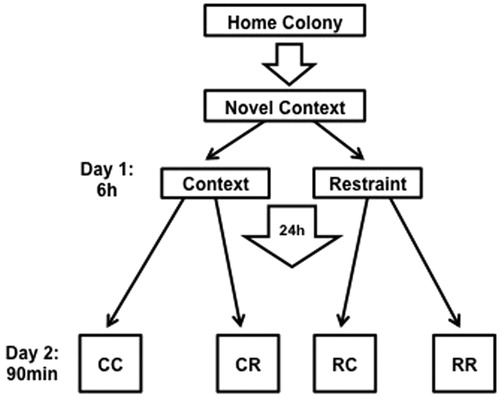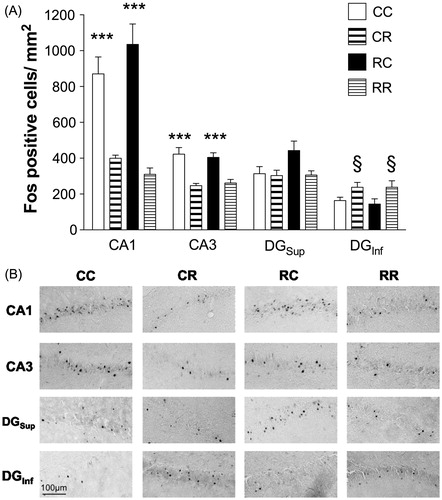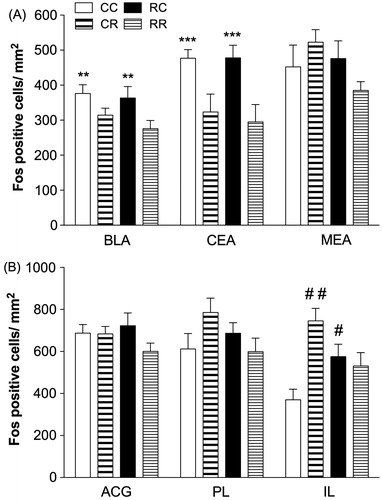Figures & data
Figure 1. Experimental timeline. Pair-housed rats were transported in their home cage to a novel context in which they were restrained (R) or left undisturbed in the context (C) for 6 h, then returned to the colony. The next day, rats again were transported to the previous day’s context and either restrained or left undisturbed, yielding four groups (first and second letter represent conditions on days 1 and 2, respectively; CC, CR, RC, RR). All groups were euthanized 90 min after placement in condition on day 2 for tissue processing.

Figure 2. Fos-IR labeling in hippocampus. (A) Regardless of day 1 experience, groups placed in context and not restrained on day 2 (CC, RC) showed elevated Fos-IR labeling in CA1 and CA3 of the hippocampus compared to those restrained on day 2 (***p < 0.001 versus CR, RR in CA1; ***p < 0.001 versus CR, RR in CA3). By contrast, groups that were restrained on day 2 (CR, RR) exhibited greater Fos-IR labeling in the infrapyramidal blade of the dentate gyrus (DGInf) compared to those that were placed in the context but not restrained (§p < 0.05 versus CC, RC; n = 6–8/group). (B) Representative photomicrographs of Fos immunolabeling across groups in the selected subregions of the hippocampus. Scale bar: 100 μm.

Figure 3. Fos-IR labeling in amygdala and mPFC. (A) Groups that were placed in a novel context but not restrained on day 2 exhibited elevated Fos expression in BLA and CEA compared to those that were restrained (**p < 0.01 versus CR, RR in BLA; ***p = 0.001 versus CR, RR in CEA; n = 5–8/group). (B) Restraint and context conditions altered Fos labeling within the IL without significantly affecting the PL or the ACG. Specifically, rats placed in the previous day’s restraint context (RC) but not restrained showed elevated Fos-IR labeling within the IL compared to those that were never restrained (#p < 0.05 versus CC). Rats that were acutely restrained (CR) also exhibited greater Fos-IR labeling compared to those that were never restrained (##p < 0.01 versus CC; n = 3–8/group).

